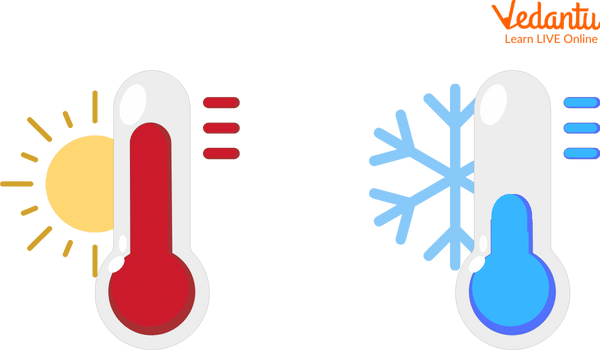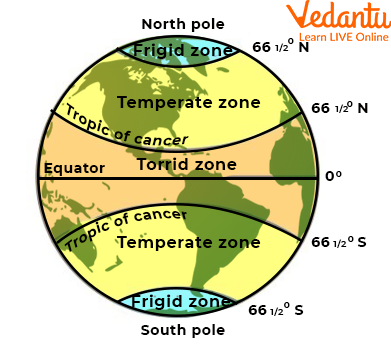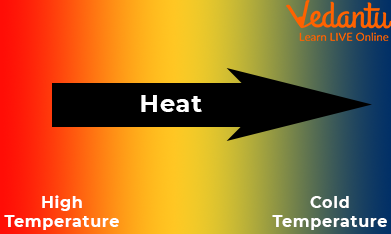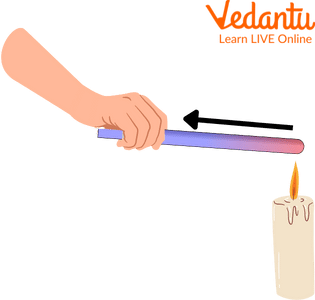




Understanding Heat
Heat is an element of nature that is present almost everywhere. Any object or place we go to has a specific temperature. This temperature can be considered hot or cold as the human body feels it and predicts it. Below is the image of heat energy which helps in the change of temperature.

Different sensations are caused due to the temperature. There is an energy involved in the prediction of temperature. The objects which tend to feel cold and give cooler sensations are said to have less energy while the objects which tend to feel hot and give hot and warm sensations are said to have higher energy.
Understanding Heat Zones with an Image of the Heat Zone of Earth
There are majorly three different zones of the earth that have different heat and temperatures to them. These three zones have significant differences and different properties towards it. Below is the image of heat zones of the earth which depict how temperature affects the earth.

The three major zones are
Torrid Zone
Temperate Zone
Frigid Zone
There are different characteristics within the heat and temperature of the three zones. The three zones have different features, some of which are listed below.
The Torrid Zone
The torrid zone of the earth is hot and has a high temperature. This part of the earth receives the most heat throughout the year since the earth's rays fall vertically on this zone.
The Temperate Zone
The temperate zone of the earth lies between both hemispheres. The temperate zone is further divided into two parts, the north temperate zone, and the south temperate zone. These zones are moderate in temperature, neither hot nor cold.
The Frigid Zone
The frigid zone of the earth is considered the cold zone and is free of heat & high temperature. The cold temperature occurs due to the very less heat received to that area and hence makes it cold.
How Heat Moves?
Heat moves when there is a difference in energy and temperature. Any place where there is a difference in temperature leads to the transfer of heat. The heat and temperature always move from hotter to colder things.

For example, whenever we touch a hot body, there is an exchange of heat and our body feels that area become warm, and sometimes we even get burnt due to the amount of heat exchange.
The heat majorly moves in three ways which are conduction, convection, and radiation. These three different ways are further explained below.
Conduction with the Image of Conduction of Heat
The process of transfer of energy or heat from one particle to another but the medium stays at that same place is called conduction. In simpler words, conduction can be considered as the transfer of heat or charge through a medium or object.

Conduction can easily occur in different states of a medium, be it liquid, solid, or gas.
Conduction occurs when heat is transferred from one molecule to the other when in direct contact with each other.
Although the position between the molecules does not change, instead they vibrate together to transfer the energy.
What is Radiation?
Radiation occurs by the heat waves generated through a body. These heat waves are absorbed by another body whose temperature might be colder or might have less heat. This process of transfer of heat is called Radiation.
For example, the Earth remains warm through the electromagnetic waves produced by the sun. In this case, radiation occurs.
What is Convection?
Unlike conduction, convection involves the motion of particles of any matter for the transfer of heat to occur. Convection involves the movement of particles while changing for heat. This generally occurs in liquid or gas.
Summary
Heat is an important aspect of nature and helps different living beings survive. The major form of heat which helps our earth survive is the sun which transfers us plenty of heat to build our environment and grow. With several forms of transfer of heat present, it makes our work easier and helps transfer energy as and when required.
FAQs on Image of Heat
1. What are the factors due to which heat rises?
Technically, it is the hot air that rises above not the heat which rises. But there are three main factors which help in the rise of hot air. The three factors are mentioned below.
Conduction
Convection
Radiation
According to the process occurring at that moment, any one of the factors comes into play and hence makes the hot air or the heat rise. These factors have different properties and significant characteristics but the common process between them is the transfer of energy.
2. While sitting near any heat source, why does it make our body heat?
It is the nature that transfer of heat occurs from one medium to another. Since the heat has higher energy while your body contains less energy there is supposed to be an exchange of energy. Our body gets hot due to the thermal radiation which occurs and initiates the transfer of energy to our body. Thus, our body feels hot while sitting near any heat source due to transfer of heat from the heat source to our body.





















